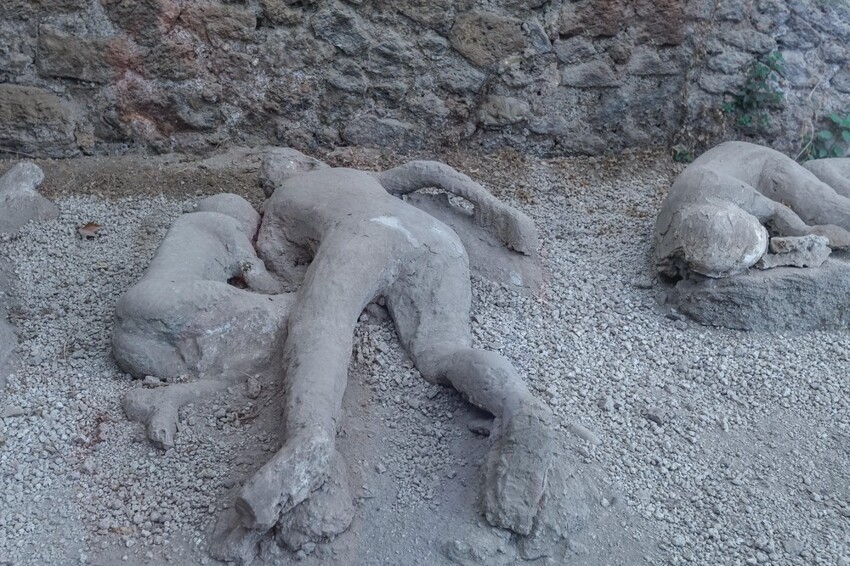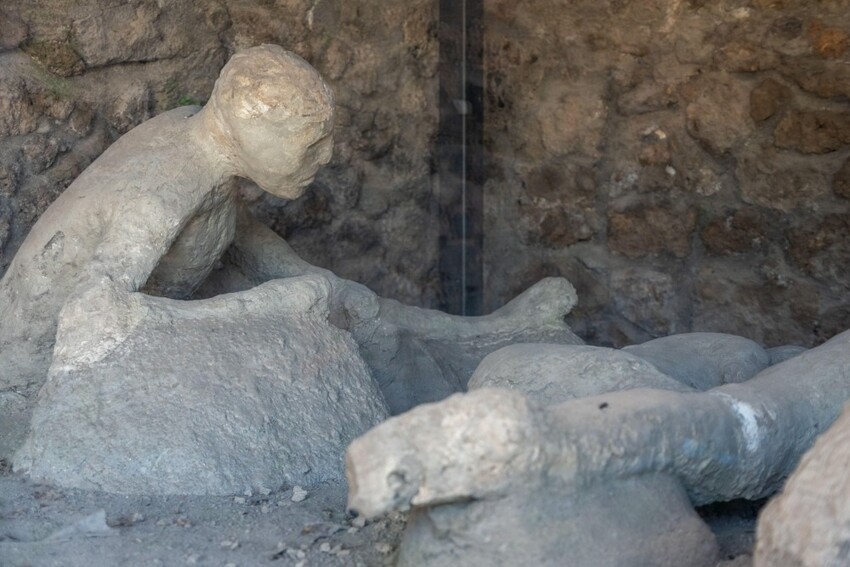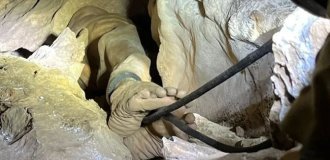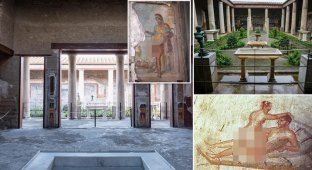Frozen in time: researchers have established how the inhabitants of Pompeii actually died (3 photos)
Until now, it was believed that most of the victims suffocated from volcanic ash and gas. However, a recent study showed that many of them died instantly from a powerful heat flash and immediately frozen in a kind of rigor mortis. 
The inhabitants of Pompeii can still be seen in that position, in which they were caught by the sudden eruption of Mount Vesuvius, although it happened as early as 79 AD. A recent study of Italian of scientists describes in detail what most of the victims had to go through at the time of their death. 
Located near Naples, Mount Vesuvius is the most known for an eruption in AD 79, which has since been considered one of the deadliest in European history. The eruption destroyed several cities and small settlements in the vicinity, one of which was the famous city of Pompeii. In Pompeii and the neighboring city Herculaneum has since discovered more than 1,500 remains, although the total the dead are still unknown. For a while, most experts believed that the cause of death of the inhabitants of Pompeii was volcanic asphyxiation ash and gas, but a recent study has completely dispelled this theory.
A study published in the journal PLoS ONE makes the conclusion that the victims of the tragic natural disaster actually died due to extreme levels of heat, with many of the victims overtaken by "their kind of rigor mortis,” according to National Geographic. 
The study was conducted by volcanologist Giuseppe Mastrolorenzo, who hired a team to analyze "layers of buried volcanic ash and rocks”, after which, from the data obtained, we built "computer model of the volcanic eruption of Mount Vesuvius".
Mastrolorenzo confirmed that during the eruption the temperature both outside and inside the premises “has risen to 300°C and higher", which turned out to be more than "enough to kill hundreds of people for split second." Further examination of the victims' bones also showed color patterns and cracks, which proved that "they were subjected to exposure to extreme heat.
And even more so it is impossible to forget about the terrible "death poses" which can be observed in many frozen victims. The Pompeians, whose the remains are preserved to this day, there are "sudden reductions muscles", for example, tucked toes.
Mastrolorenzo explained: “Until now, archaeologists interpreted [the remains] as people trying to breathe, and believed that they died suffocating on the ashes. Now we know that it couldn't be". He added that when the "pyroclastic wave" hit the Pompeii, the people "didn't have time to suffocate."
“Distorted postures are not the consequences of prolonged agony, but cadaveric spasm, a consequence of heat shock on corpses, ”he concluded.






















